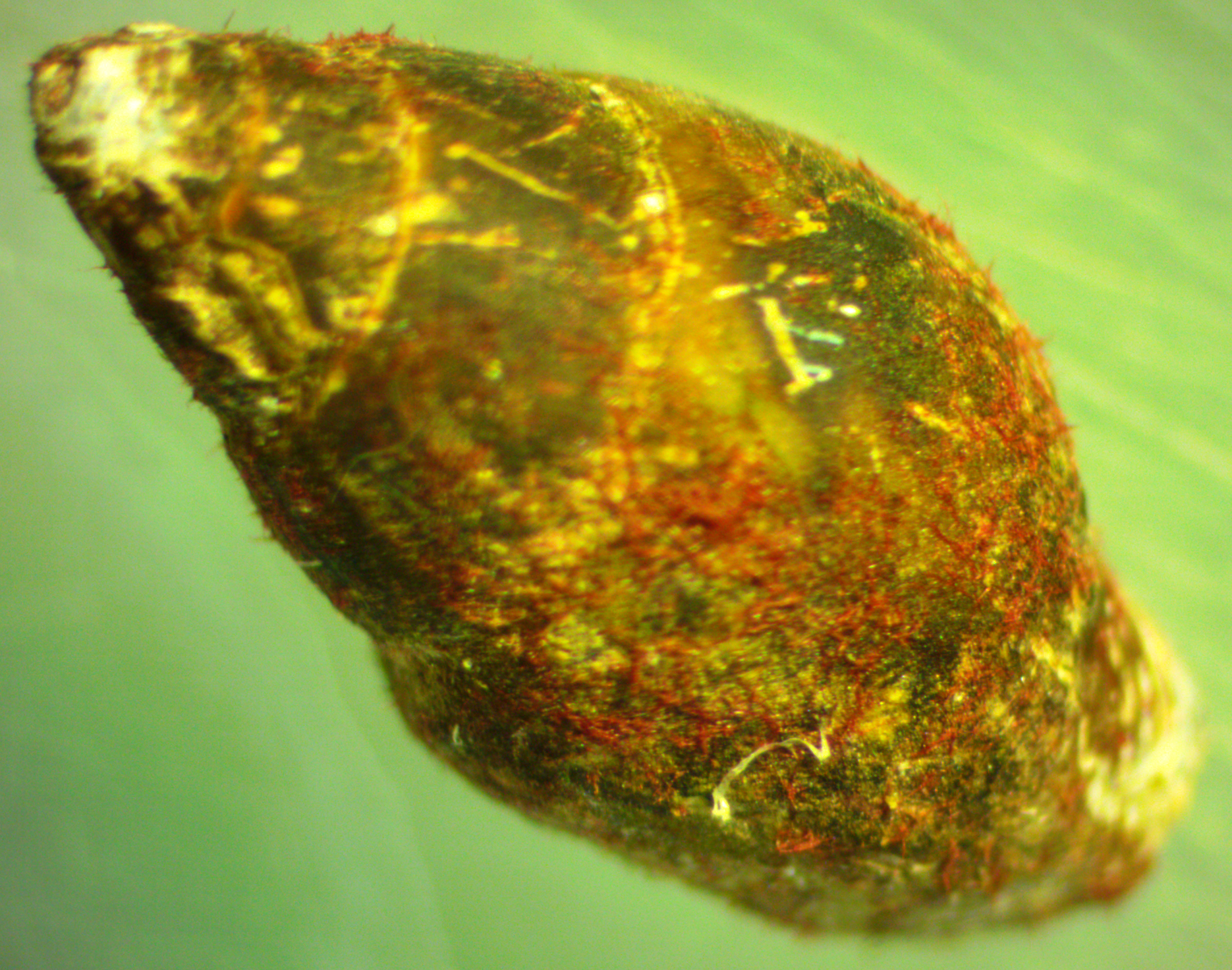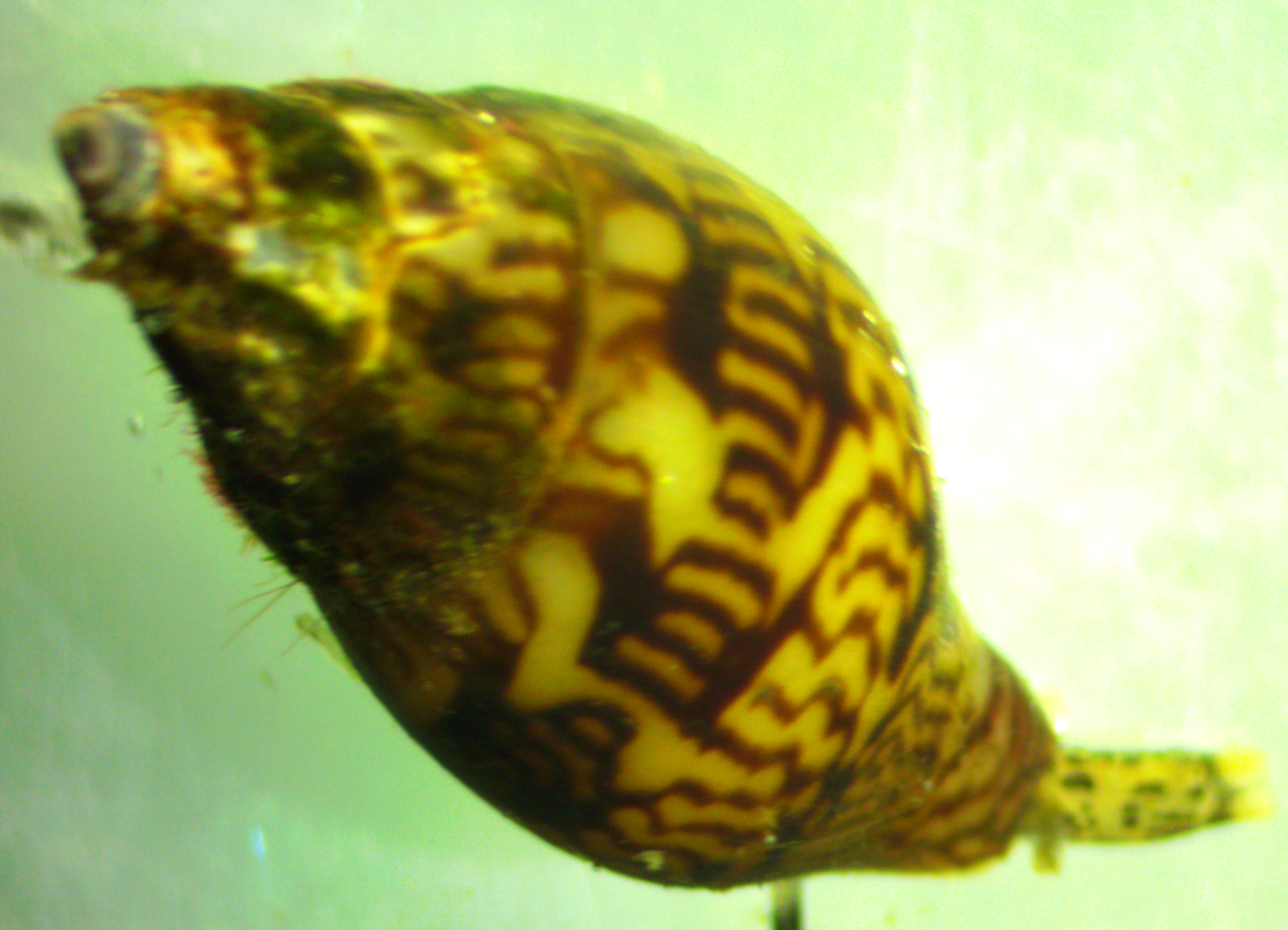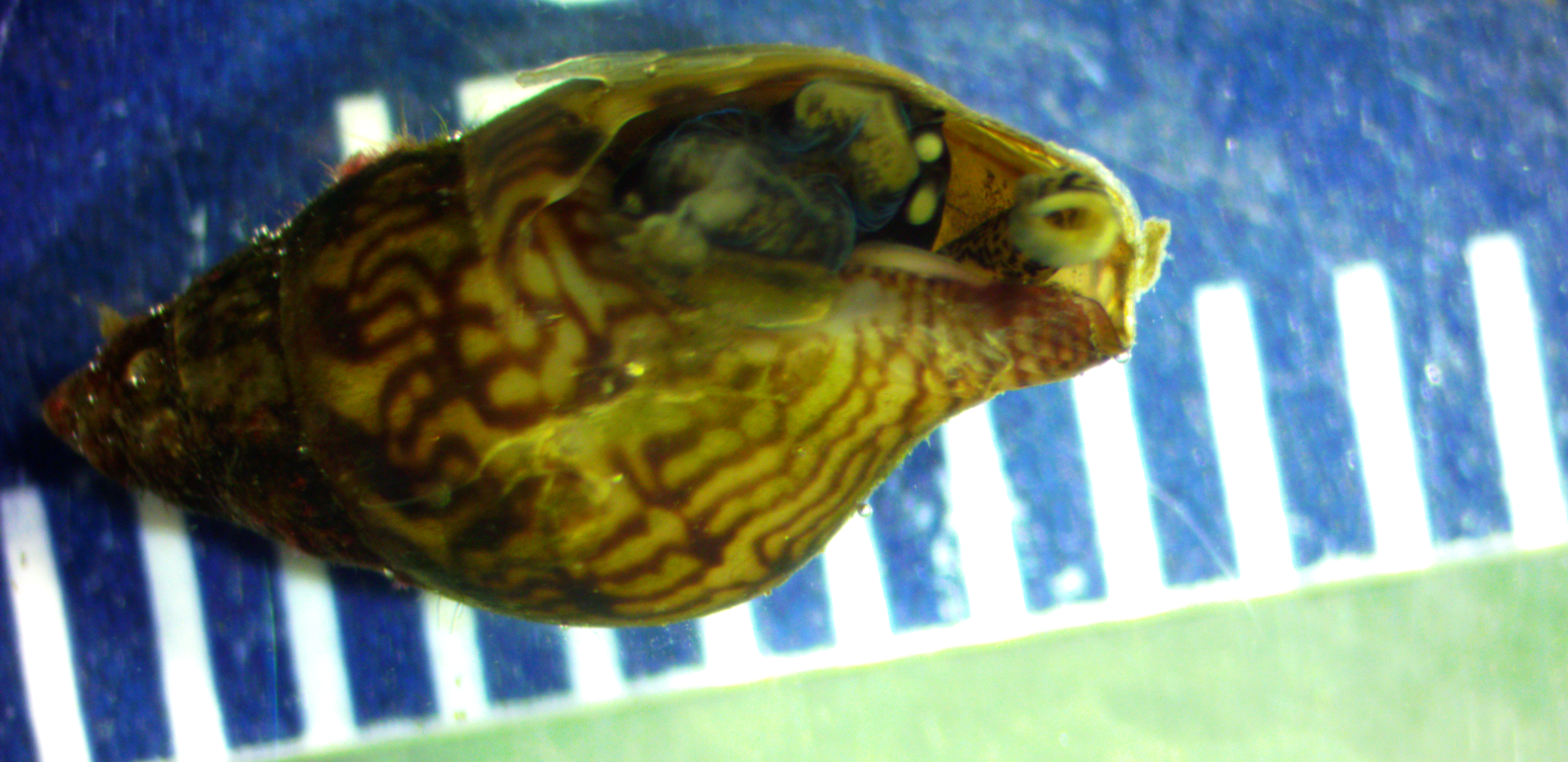Description: Members of Order Neogastropoda have a coiled shell with a well-developed siphonal canal. Their siphon is long also and their gill is monopectinate (featherlike, but only one side develops). Rachiglossans have a radula with large rasp-like teeth which is characteristic of predators. Sexes are separate. Family Columbellidae are small, mostly tropical snails called dove snails which have shorter siphonal canals than some other neogastropods. Alia tuberosais a small species with a well-developed spire (about 3-5 whorls in these individuals). Much of the shell is generally covered with brown periostracum, which may be thick and slightly rough or may be smooth and decorated with lines as above. The exterior shell has faint spiral ridges on the anterior portion of the body whorl (photo), but in my experience these may be quite hard to detect or virtually nonexistent, especially if the periostracum is thick. The columella has either no fold or two or 3 folds. The outer lip of the aperture is not evenly curved-part of it is nearly straight (photo). The operculum is thin and horny (photo). The body is creamy or off-white with distinct black spots and a long siphon (photo). Height of shell up to 1 cm but rarely more than 9 mm.
How to Distinguish from Similar Species: In Astyris gausapata the siphonal region of the shell is not obviously set off from the rest of the body whorl when viewed from the side opposite the aperture. Alia carinata has a large spiral ridge around the upper body whorl. This ridge is often lighter-colored than the rest of the shell and gives the body whorl a distinct shoulder. Several other dove-shell species such as Amphissa columbiana have spiral ridges visible on other parts of the shell besides the lower part of the body whorl.
Geographical Range: Prince William Sound, Alaska to Gulf of California, Mexido.
Depth Range: Intertidal or subtidal
Habitat: These were found on eelgrass.
Biology/Natural
History: Shell
configuration (the protoconch,
or tip of the spire)
indicates that the larvae of this snail are planktonic
and may actively feed in the plankton.
| Return to: | |||
| Main Page | Alphabetic Index | Systematic Index | Glossary |
References:
Dichotomous Keys:Kozloff, 1987, 1996
General References:
Lamb
and Hanby, 2005
Scientific Articles:
Demaintenin, Marta J., 2019. The Columbellid species
of the northeast
Pacific coast from the Aleutian Islands to Cedros Island, Baja
California
(Neogastropoda: Columbellidae. Zoosymposia 13: 160-183.
http://dx.doi.org/10.11646/zoosymposia.13.1.19
(as Mitrella
tuberosa)
Web sites:
General Notes and
Observations: Locations, abundances,
unusual behaviors:
In this photo the brown periostracum
and faint spiral ridges around the lower end of the body
whorl (near the right end in this photo) can be discerned.
In this image of the aperture side of the animal one can see that the outer lip of the aperture is nearly straight in the middle portion instead of evenly rounded. The short siphonal canal is also visible. As the animal emerges from the aperture the creamy color with black blotches on both the foot and the proboscis-like incurrent siphon, which is just beginning to be extended. The main part of the body is not yet emerged, so mainly the bottom of the foot is visible within the aperture. Note the blue sheen on the foot, which may be due to light interference patterns created by cilia. The scale is millimeters.

A variety of patterns may be seen on different individuals, such as
the one above. The thin, horny, nearly clear operculum
is also visible. Photo by Dave Cowles, August 2024.

This individual has not only a different pattern, but also the red
hairy patches (appears to be periostracum) and visible folds near the
siphonal
canal. Photo by Dave Cowles, August 2024.

Others are worn, and/or have patches of what appears to red hairy
periostracum
here and there, as above. Photo by Dave Cowles, August 2024.
Authors and Editors
of Page:
Dave Cowles (2018): Created original page
CSS coding for page developed by Jonathan Cowles
Salish Sea Invertebrates web site provided courtesy of Walla
Walla University

